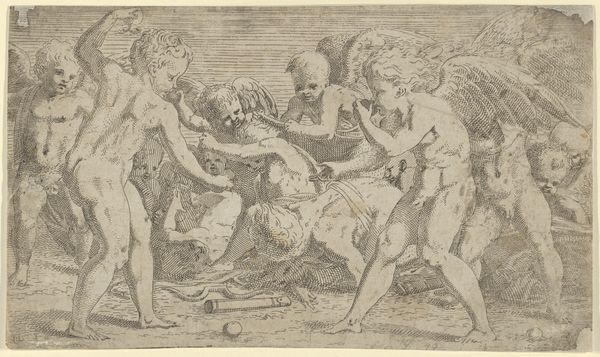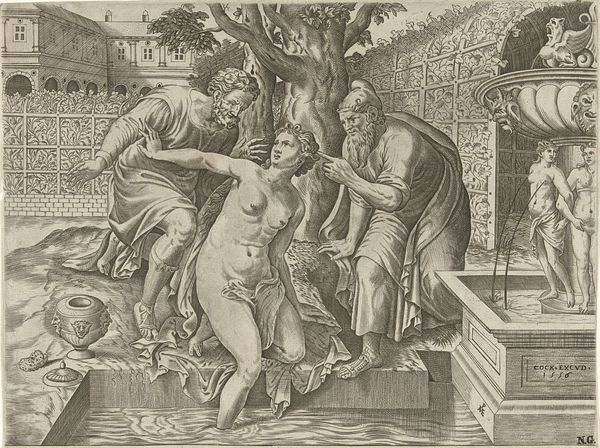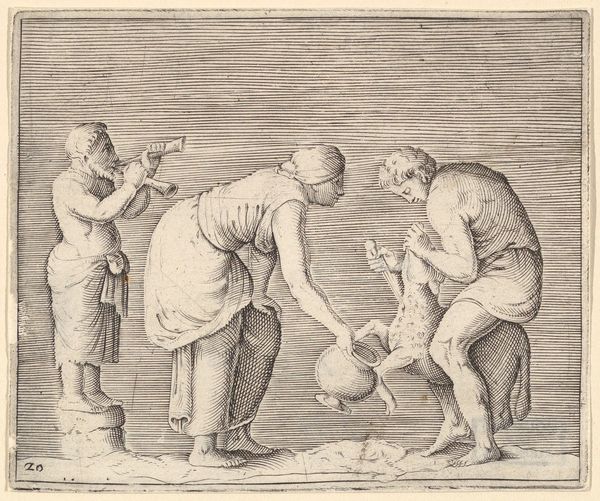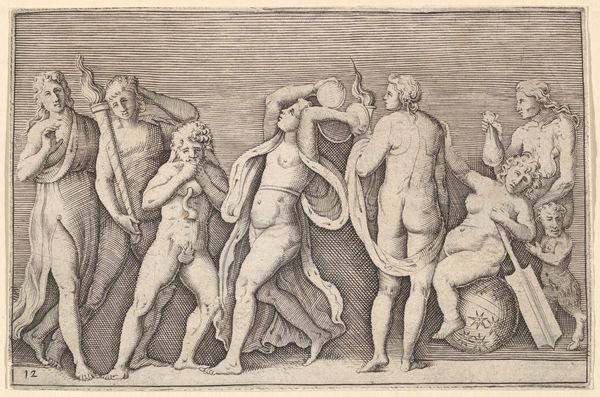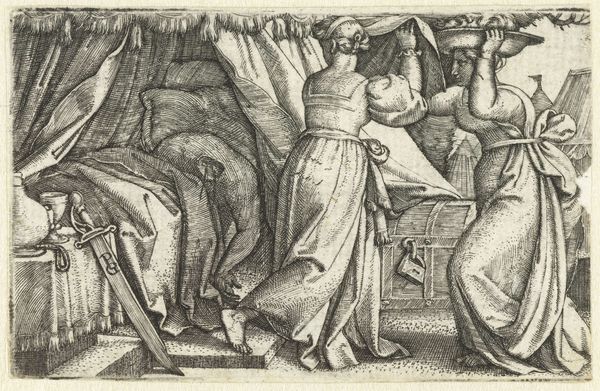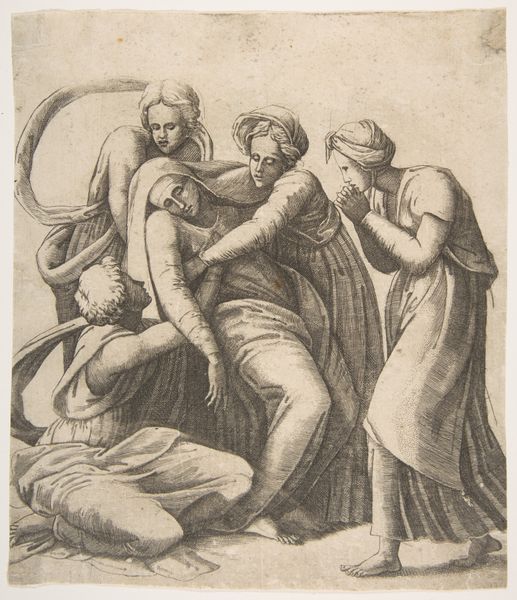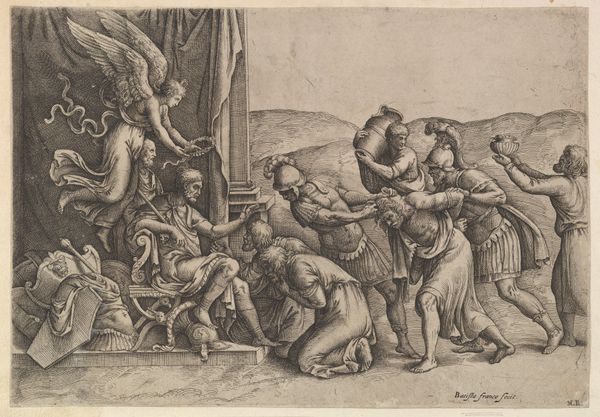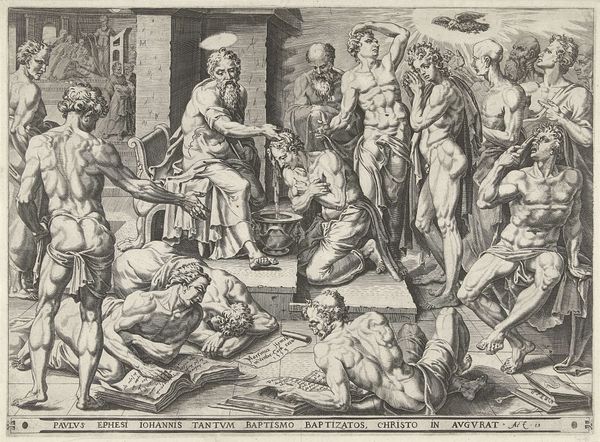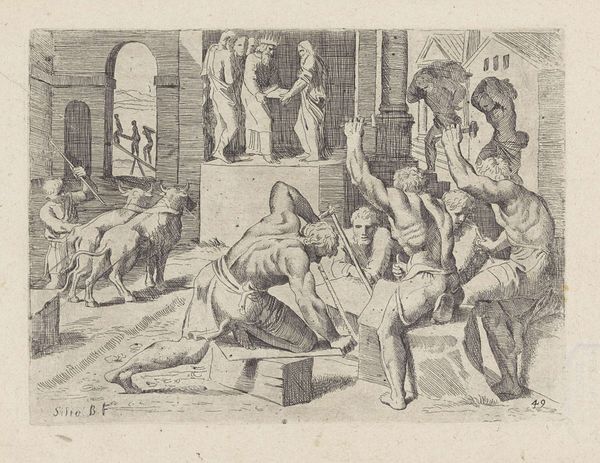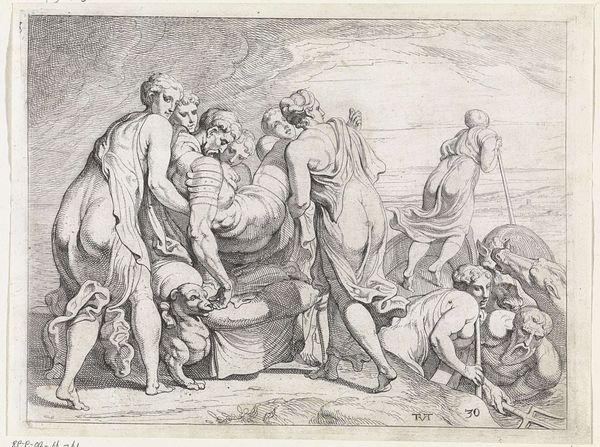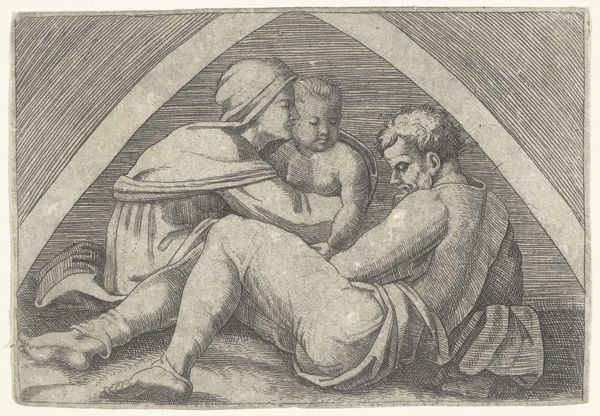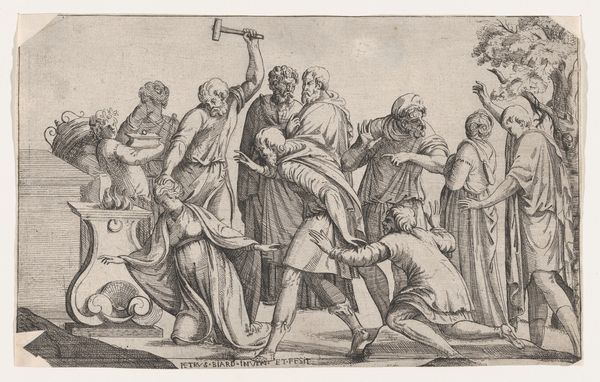
Scene of Sacrifice with Warrior Killing Ram and Four Other Figures, from "Ex Antiquis Cameorum et Gemmae Delineata/ Liber Secundus/et ab Enea Vico Parmen Incis" 1599 - 1622
0:00
0:00
drawing, print, engraving
#
drawing
# print
#
figuration
#
line
#
history-painting
#
italian-renaissance
#
engraving
Dimensions: plate: 3 7/16 x 4 7/8 in. (8.8 x 12.4 cm)
Copyright: Public Domain
Curator: What strikes you first about this Scene of Sacrifice? It's an engraving made sometime between 1599 and 1622, part of a series based on ancient cameos and gems, and it definitely evokes a particular visual style. Editor: Stark, isn't it? A clean severity, almost as if rendered by sunlight alone. The linework carves out these figures in dramatic poses, yet the composition feels somewhat frozen. I find myself searching for the release, the aftershock, of this sacrificial act. Curator: Well, consider the context. These engravings aimed to disseminate knowledge of classical art. It wasn't necessarily about capturing dramatic intensity, but about faithfully documenting these ancient scenes, thus standardizing the visual grammar and influencing tastes. Editor: Standardizing… like visual Esperanto. I get it, it’s about communication. Yet, beyond the literal scene a warrior killing a ram with several figures looking on something profound shifts, that silent witness of myth, sacrifice, tradition... And the lack of any strong emotive depiction renders the entire thing quite uncanny, don’t you think? Almost cold? Curator: It speaks to the period’s interest in objective representation, though objectivity is a construct, naturally. Renaissance artists and scholars used these images to build a visual understanding of the classical world. Also, engravings served as reproductive mediums, bringing these "cameos" to a broader audience who couldn't travel to see originals, and thus creating the aesthetic common ground. Editor: Common ground... that’s well said, I think it resonates to our digital age: reproducible information accessible by the mass, even if emptied of the rich evocative dimension we find in original works. As such, these figures have a curious duality, no? A flat, distant affect… and simultaneously, those perfectly captured muscles, the sheer physicality… haunting, almost, given the cold presentation. It reminds us of what stories get emphasized – or erased – by those holding the proverbial chisel. Curator: I agree; it makes you ponder on the choices made in reconstructing antiquity; after all, it always reflects contemporary ideologies. Editor: It is indeed more layered that initially supposed. It’s strangely… modern, now that I think of it, a mirror reflecting our own mediated experiences.
Comments
No comments
Be the first to comment and join the conversation on the ultimate creative platform.
